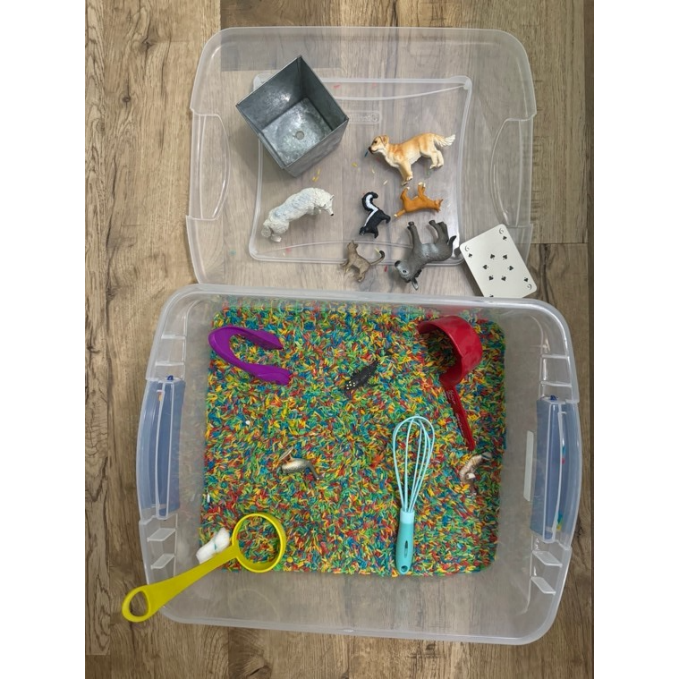
Dive into a sensory bin and see what objects you pull out!
During exploration time (centres), learners in Kindergarten were given the opportunity to explore sensory bins. Sensory bins included a bin (bowl, cookie tray, reusable plastic container), filler (sand, water, shredded paper, rice, pom poms, etc.), and tools (paint brushes, pots, plastic tweezers, cups, etc.).
In this Kindergarten classroom, the theme of the month was “animals.” Learners had already answered the question of the day, “What is your favourite animal?,” verbally or by pointing to a picture of their chosen animal and then writing or drawing about their animal in their writer’s notebook.
During play time, they explored sensory bins that were full of different animals. Learners had number cards (1 to 20) at the table. They were encouraged to pick a number card and identify it. They then picked out that many animals, either using their fingers or tools inside the sensory bin.
The teacher would be nearby to ask prompting questions and encourage language development with individuals, as well as the whole group. For example, the teacher would ask the following questions:
The learners were prompted to explain the “why” behind their answers, offering their reasoning or evidence. They were also encouraged to ask one another questions about their animals or other topics as they shared and learned together. Learners could then play and tell stories with the animals they selected, either by themselves or with others at the table.
Teacher Resources
Compton, Michelle Kay, and Robin Chapple Thompson. Story Making: The Maker Movement Approach to Literacy for Early Learners. Redleaf Press, 2020.
Thompson, Angelique, and N. Kenisha Bynoe. The Gift of Playful Learning: A Guide for Educators. Shell Education, 2023.